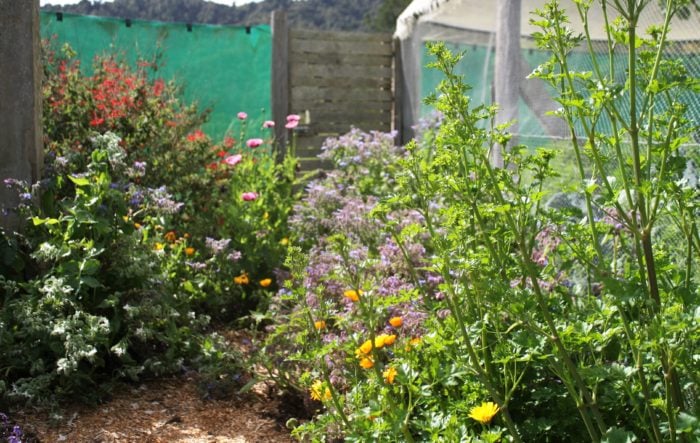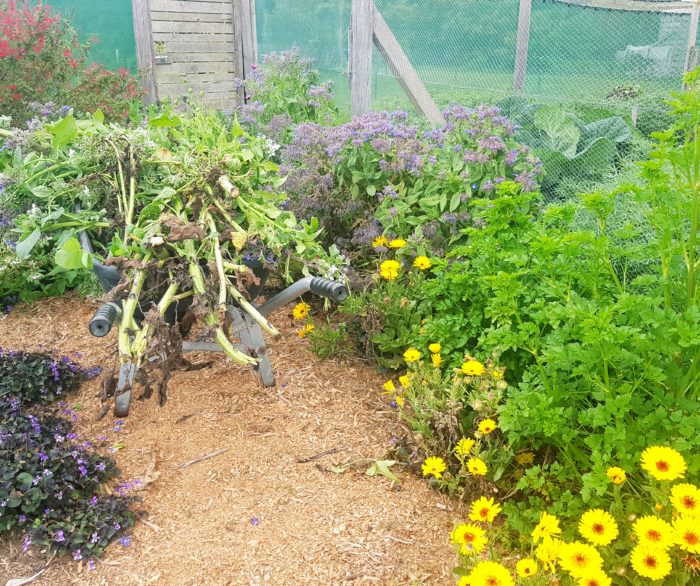Smart Edge Design Saves You Work!


This would be an easy post to skip past - the edge? what edge?! And yet its one of those foundational concepts that if you adopt, can save you loads of work and increase the fertility and life in your soils by miles.
Planting up the outside edge of your vegie patch brings benefits galore, but today were loving it because planted edges reduce incoming grass + weeds. This barrier or 'weed break', slows the advance of grass. When teamed with mulched paths = a grass free zone.
Plant the densely, using tough competitive groundcovers like perennial cornflower, nasturtium, pineapple sage, flax, sorrel, lemon balm, wormwood, rengarenga, yarrow, salad burnet - whatever grows vigorously at your place.
Edge Gardens

These edge gardens are multi purpose. They:
- provide a tonne of ingredient for mulch and compost.
- feed the bees and beneficials
- are home to a diversity of perennial roots that strengthen and stablise soil
- are a handy dandy place to rot down big chunky prunings like corn stalks and sunflowers
- provide herbs for teas, medicine and eating
- are the perfect spot for perennial vegetables, fruits + flowers
Some Examples:

Along the edge where the berryhouse joins the vegie patch is a diversity of plants that greatly reduce the weeds along this edge. Every now and then these companion plants get a bit exuberant and block the path, so I harvest them for mulch or compost.

Hard Edges + Trees

Where hard edges like fences and sheds meet lawn, a high maintenance area (mower + weedeater/ edging tool) is born. Reduce your workload by creating a soft planted edge that the mower can go right up to.
Sleepers, bricks and stones that meet lawn are lots of extra work as well because they harbour the roots of hard to get rid of weeds and require the same 2 step process as above. Remove the hard edges and plant it up instead.
Another time consuming, extra work edge is created when trees are planted in lawn. Fill the space beneath the trees with companion plants all the way out to the dripline or beyond. Grow whatever it is the tree (or you) need and eliminate the job of weeding (or god forbid spraying) the base of your trees.
